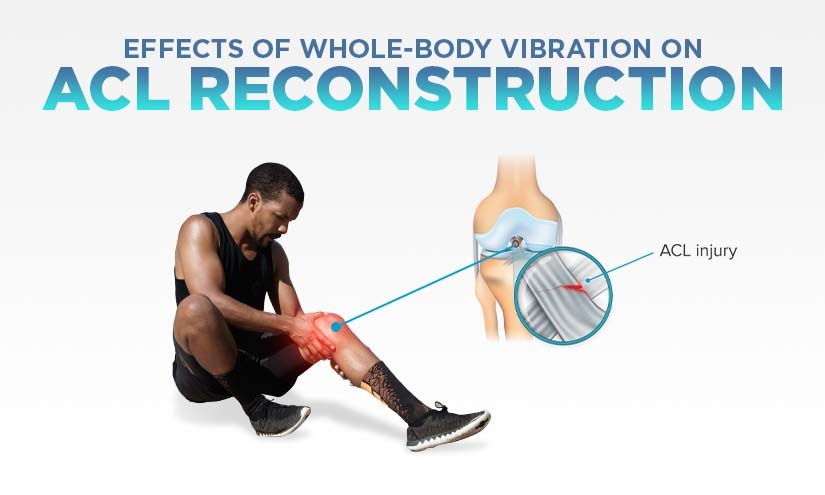
Whole-body vibration (WBV) is a type of exercise that is performed on special fitness equipment, known as the body vibration machine. The activity has gained a significant chunk of popularity thanks to the extensive scientific evidence with truly promising results. The vibration plate has been found beneficial in increasing muscle power, flexibility, postural stability, and kinesthesia, among others. Lately, scientists have been investigating another application of the whole-body vibration machine, namely its use as a rehabilitation tool for recovery from ACL physical injury. In this article, we are going to discuss ACL in greater detail and will explore the link between whole-body vibration and ACL recovery.
ACL stands for Anterior Cruciate Ligament. It is a type of ligament that is found in the knee joints. In their true essence, ligaments are bands of tough tissues whose main purpose is to hold cartilage and bones together. As to the role of the ACL – it stabilizes the knee and connects the femur to the tibia. Lately, the topic of Anterior cruciate ligament injuries has seen a drastic rise. It is a common type of physical injury that is observed predominantly in the elite sports environment but can also affect any other person. Normally, the trauma occurs due to extreme stretch of the ligament, causing it either to tear partially (sprained) or completely (torn). ACL lesions seem to be happening most commonly in sports such as football, basketball, tennis, soccer, skiing, and all other types of activities that involve various forms of pivoting or sharp turning. Furthermore, it has been observed that women are more likely to injure their Anterior cruciate ligament than men.
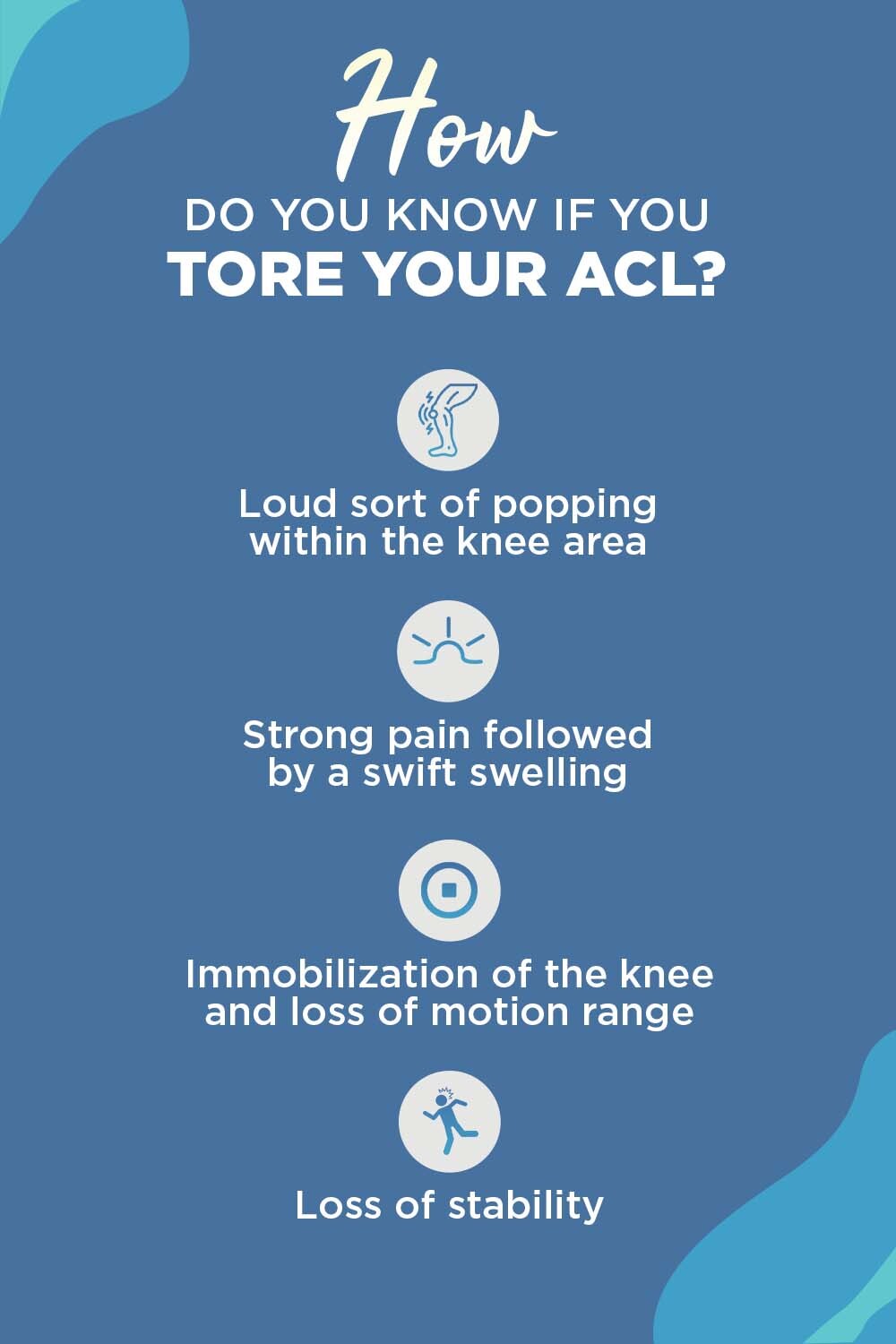
The main concern is that even after prolonged rest and rehabilitation procedures (in most cases up to a year), many athletes share that their knee is not completely recovered and they do not consider themselves being able to perform at their best. Some recent studies, such as this Clinical Randomized Controlled Trial suggest that whole-body vibration could accelerate the ACL recovery process, especially after replacement surgery.
As already mentioned, ACL lesions are among the most common knee injuries that can affect people from all sorts of backgrounds and ages. Yet, due to the nature of the condition, it is most often observed within the athletic environment. Depending on the type of physical trauma, the injury can be divided into two major categories – sprained and torn. As you can imagine, a sprained ACL refers to a partially damaged ligament, whereas a torn one means the ligament is fully damaged or ruptured. The strains can be further graded into mild and moderate. Below is the grading system used by medical scientists to address the severity of ACL damage:
You can easily tell if you have sprained or torn your Anterior cruciate ligament by the symptoms following the injury. For instance, if you feel a mild to moderate pain in your knee area and observe a bit of swelling, most probably you have sprained your knee ligament. On the contrary, if you hear loud popping and experience a sharp pain followed by a sudden swelling, it is almost certain you have torn it. Usually, the former (sprained) can be treated with adequate rest and rehabilitation, whereas the latter (torn) requires immediate surgical intervention. Nevertheless, a proper rehabilitation program is also needed after the surgery for complete recovery. This is where whole-body vibration performed on the vibration plate comes in place. The activity has been found to be particularly useful within the sprained ACL rehabilitation, as well as in the post-surgery rehab.
Medical scientists advise people who have experienced a knee ligament injury to see their doctor as soon as possible. This is a serious physical trauma that needs immediate and adequate attention. Failure to do so might result in a series of unwanted implications, making the recovery process impossible. It has been observed that the procrastination related to fixing a damaged Anterior cruciate ligament could lead to the chronification of the problem, known as chronic ACL deficiency. Once patients have reached that stage it becomes extremely difficult or even impossible for surgeons to fix the ligament. Furthermore, if untreated, the condition may affect the normal functioning of other joints and significantly decrease quality of life.
Bringing back the normal motion range of the knee joint is of paramount importance for every athlete in order to reach pre-injury performance. Additionally, gaining full recovery after a torn knee ligament will decrease significantly the possibility of injury relapse. This is why the severity of the damage must be established properly, so as to prescribe an adequate treatment and rehabilitation regime. Over the past decade or so, the positive scientific evidence regarding the use of the body vibration machine as a complementary tool to conventional ACL rehabilitation has been growing. That has inevitably led to the more frequent implementation of the equipment within the physical rehab setting. According to the clinical data, the vibration plate has been found to be especially helpful in increasing the muscle flexibility of the lower limbs, regaining neuromuscular control and strength following the injury, raising the stability of the posture, and enhancing proprioception during the rehabilitation procedure. Furthermore, the enhancement of knee joint flexibility via WBV has proven beneficial for preventing knee injuries in the first place. References (in order of appearance) The female ACL: Why is it more prone to injury?. (2016). Journal of orthopedics, 13(2), A1–A4. Berschin, G., Sommer, B., Behrens, A., & Sommer, H. M. (2014). Whole-Body Vibration Exercise Protocol versus a Standard Exercise Protocol after ACL Reconstruction: A Clinical Randomized Controlled Trial with Short Term Follow-Up. Journal of sports science & medicine, 13(3), 580–589. Fagnani, F., Giombini, A., Di Cesare, A., Pigozzi, F., & Di Salvo, V. (2006) The effects of a whole-body vibration program on muscle performance and flexibility in female athletes. American Journal of Physical Medicine & Rehabilitation, 85, pp. 956-962.
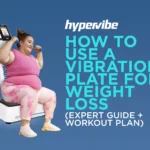
Here’s how we use a vibration plate for weight loss...
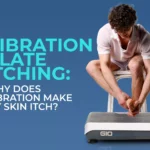
Many people, especially beginners, notice an itchy or tingling “pins-and-needles”...
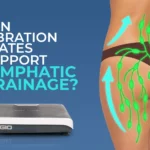
Yes, Vibration Plates or Whole Body Vibration (WBV) platforms, promote...
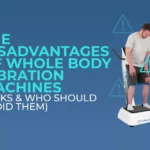
Are vibration machines bad for you? Yes, if used incorrectly....

The lymphatic system, also called the lymphoid system, is an...